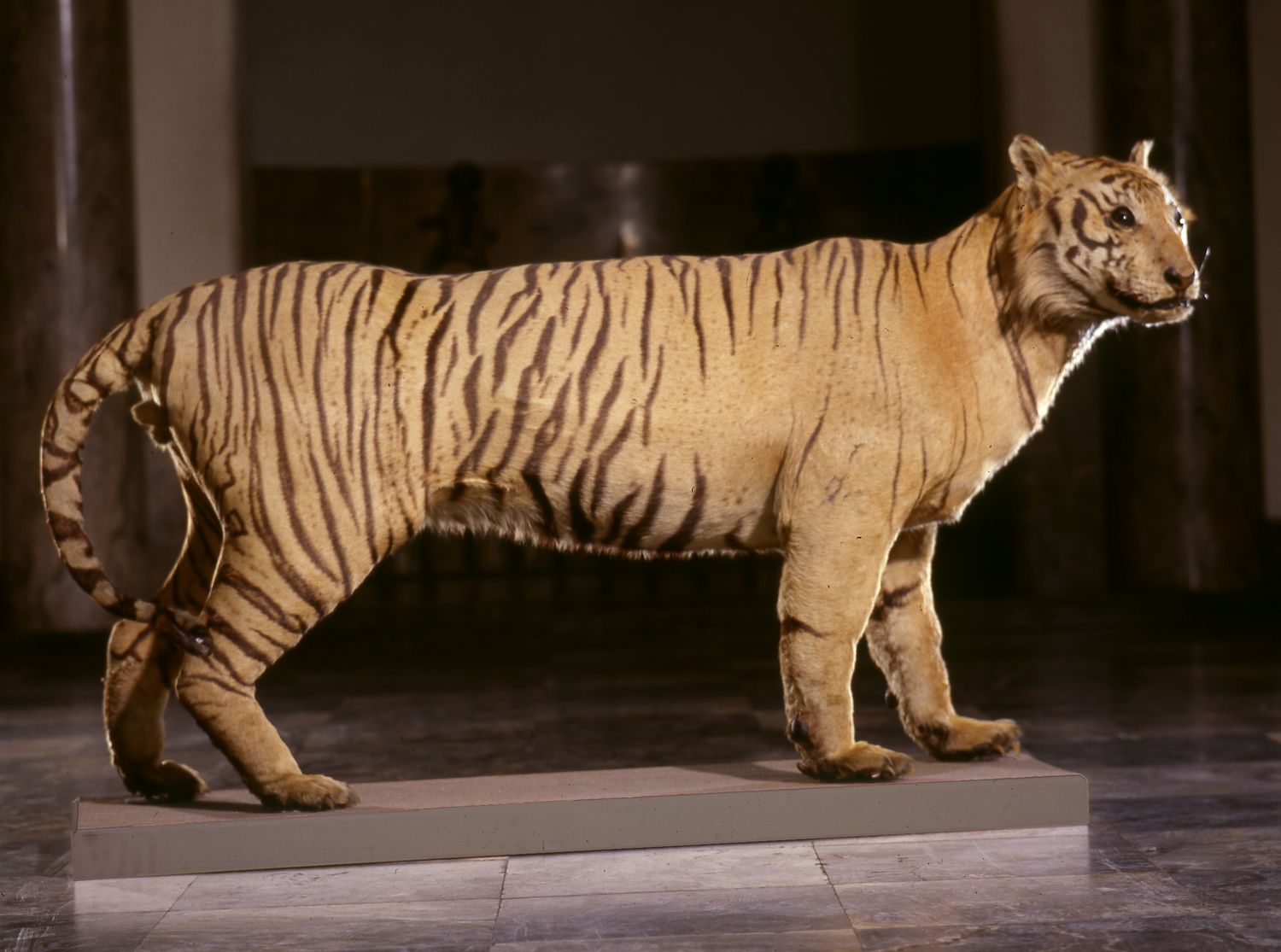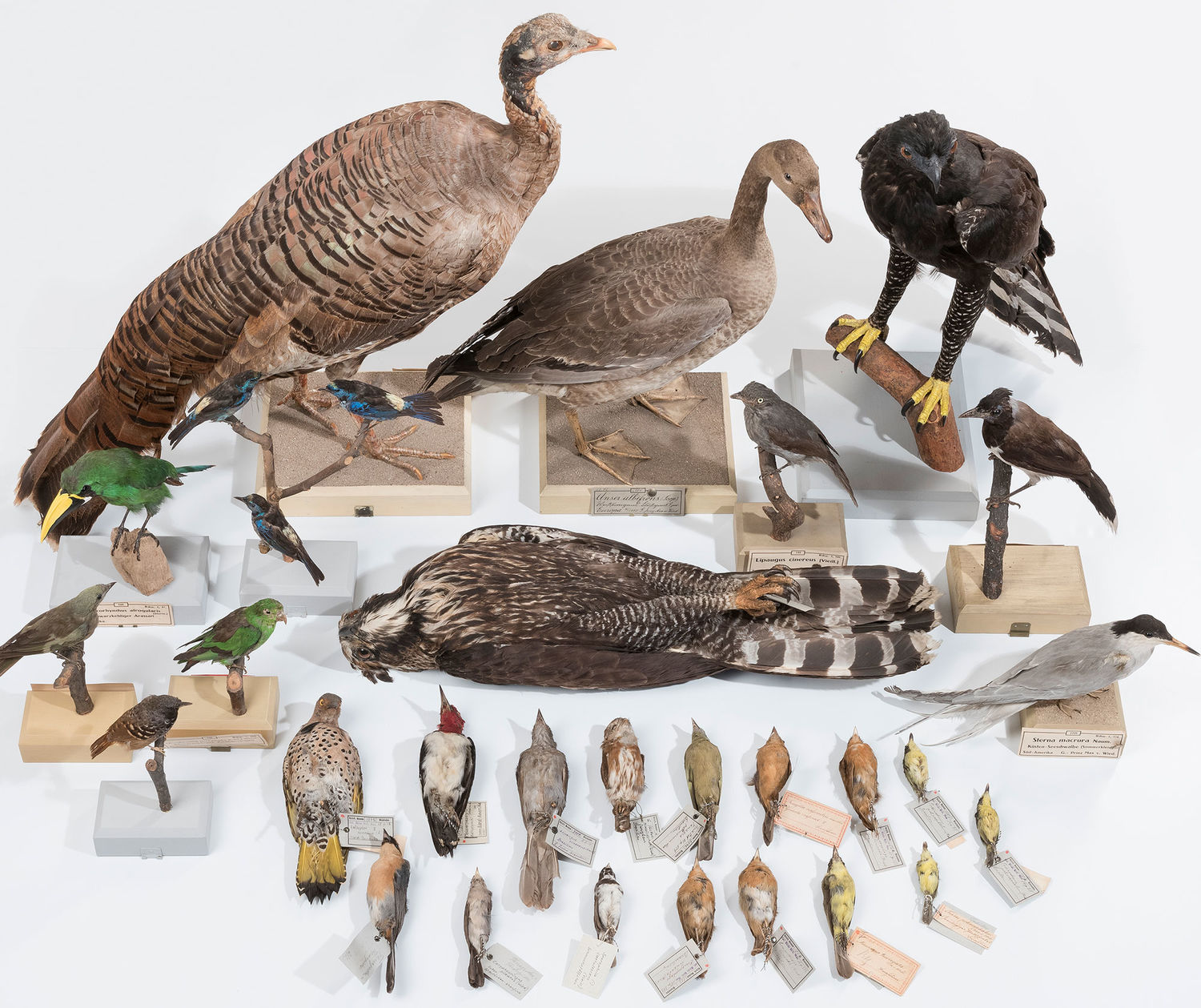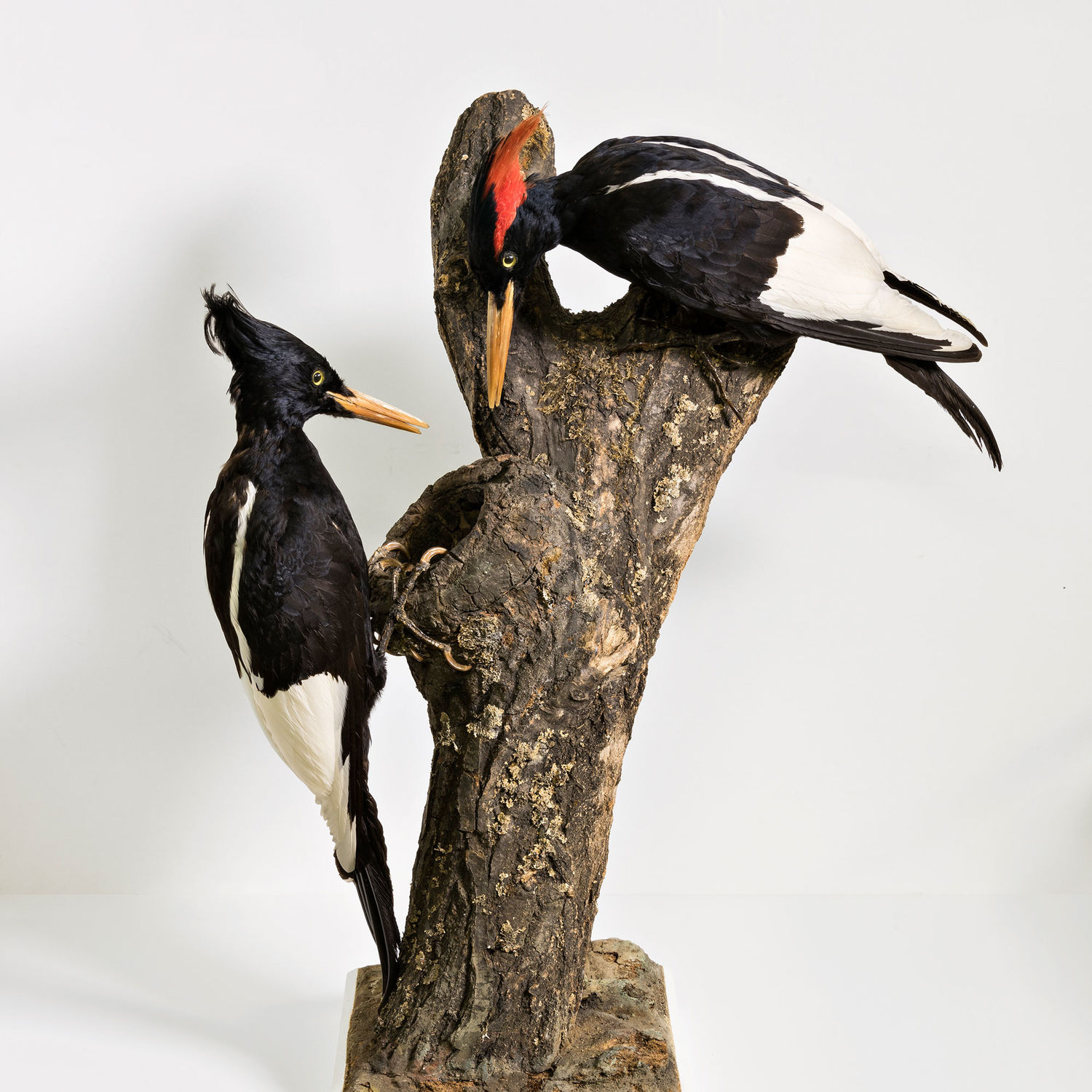Skull of a Java tiger in the permanent exhibition Aesthetics of Nature. Photo: Museum Wiesbaden / Bernd Fickert

One of the animals that illustrates this best is the Java tiger (Panthera tigris sondaica). In 1826, the museum acquired four skulls and the complete body of a tiger from Batavia, where Ernst Albert Fritze was working as a doctor and regularly sent objects to the museum’s Natural History Collections. To ensure they survived the long voyage, Fritze recommended transporting the bones and the hide in a barrel of rum. After arriving safely in Wiesbaden, the hide was treated to preserve it before being mounted. Today, there are no more tigers on the Indonesian island of Java. After the Dutch began cultivating arable crops and teak, the tiger’s habitat and sources of food diminished. Protected zones were established in the 1920s and 1930s, but by then the area was so densely populated that it was too late to stop the tigers becoming extinct. The exhibition about the future Seven Hills – Images and Signs of the 21st Century, shown in Berlin in 2000, was one of the most expensive the German capital had ever mounted. It included a section called “Cats and Chats” devoted exclusively to tigers in which the Wiesbaden specimen was on display as a symbol of endangered species.

Of all the vertebrates, birds make up the lion’s share of the Wiesbaden collections. There are some very special birds here, like the ones that Prince Maximilian zu Wied-Neuwied collected on his expeditions to South and North America and that are still preserved at Museum Wiesbaden to this day.

The pair of imperial woodpeckers (Campephilus imperiales) are likewise real rarities and are impressive even in their preserved state. Unfortunately, they are also one of the planet’s irrevocably lost species. The imperial woodpecker was the largest woodpecker of all and probably one of Mexico’s most majestic birds. It used to inhabit open but contiguous areas of pine forest on the high plateaus of the Sierra Madre Occidental at an altitude of between 2000 and 3000 metres. Their untouched habitat was naturally full of dead wood that provided ample nesting sites and, at specific times of year, a plentiful supply of beetle larvae, which the woodpeckers foraged for in small wandering groups. It was during these larvae-foraging expeditions that their call could be heard, which apparently sounded like a toy trumpet. But this imperial fanfare seems to have fallen permanently silent, for even extensive searches have failed to find any trace of the woodpecker.*

The Java tiger, the imperial woodpecker, and a host of other specimens are just some of the exhibits to be found in the collection of treasures from the natural world, past and present. A few of them even allow us to see into the future, providing an idea of how the animal kingdom might evolve in the long term. Many of these specimens are so sensitive that they cannot be put on permanent display.
To allow visitors to see them nonetheless, some of them are currently being digitally recorded in 3D so that they can join the museum’s online collection. The process is not as simple as it might sound. It involves using a hand-held scanner to photograph and measure the objects from all sides, a bit like drawing figures in the air with a clothes iron. The data are then used to make digital models around which visual information like colour and texture is ‘wrapped’. Very fine textural detail or colour contrasts present difficulties of their own, making it a particular challenge to create digital images of shiny surfaces or filigree body parts, such as curly hair or feathers. Occasionally the digital specialists are forced to give up, but in most cases they succeed in producing an impressive 3D model.
In this way, even very sensitive objects can be accessed in digital form, although obviously models are not a substitute for a live encounter with the original.

Dr. Hannes Lerp
Custos vertebrates
<span lang="en"> </span>
*These mounted specimens of two imperial woodpeckers belong to the bird collection of Museum Wiesbaden’s Natural History Collections. The male and female were collected in 1906 by A. v. Hagen in the Sierra Madre, Mexico.
Translation: Lance Anderson